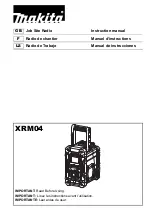
CASE 1:
You are going to install this equipment for a Wireless ISP client, which has maximum 256 kbit download speed and
128 kbit upload. Go to traffic control menu and enable "Interface traffic control", with the values:
LAN Output rate: 256
-> LAN control downloads
WAN Output rate: 128
-> WAN control uploads
With interface based traffic control, you can control maximum interface speed, regardless NAT function enabled or
not.
CASE 2:
You are going to install this equipment for an inn establishment, which have 3 clients. Each client wants to have their
own speed rate.
With this scenario, you can control them via IP or MAC address. To do it so, enable you desired option ( IP/MAC
control ) and put your client's IP/MAC address. One entry for each client. This way, you will limit desired speed for
each individual client. Further more, you can activate firewall option to block any other machine not listed.
To use IP/MAC control, you must disable interface traffic control.
=> HOW TO USE BANDWIDTH CONTROL WITH QoS GROUP OPTION
QoS groups are used to limit a group of users, and share the total rate. The idea here is simple:
- Any member of the group can reach the total rate of the group
- The total sum of all member's traffic together, will not exceed the total rate of the group
- Any member of the group can have guaranteed bandwidht
- Equal bandwidth sharing
Ex:
Let's back to our example above. Inn establishment, which have 3 clients. All clients have 256 kbit speed contract.
One of the clients has 2 machines, which he likes to use internet on both. How to solve this case, if he has 256 kbit
speed and two machines? Simple. Let's enable QoS group option.
Go to traffic control and enable QoS group option. Create a group as follow:
Group
ID:
1
LAN Out rate: 256 -> Total rate for download
WAN Out rate: 256 -> Total rate for upload
Next thing to do is to put the two machines of that client inside the group ( via IP or MAC control ), as follow:
Group ID: 1
-> Member of QoS group ID 1
Содержание BOSSW72
Страница 2: ......

































